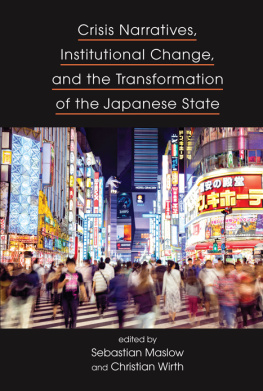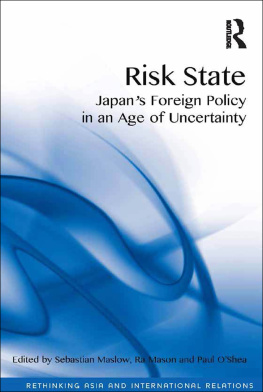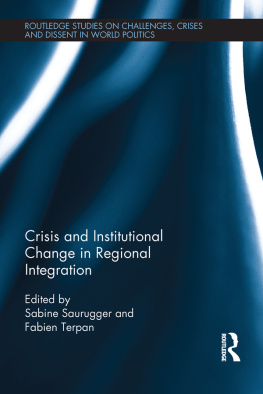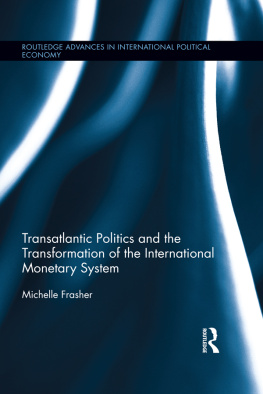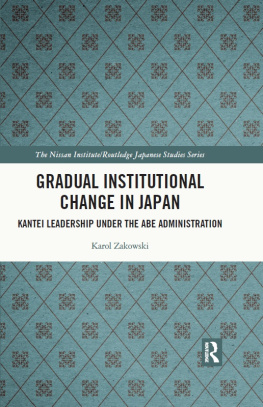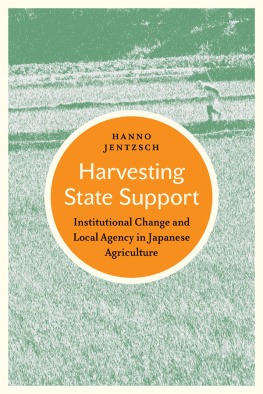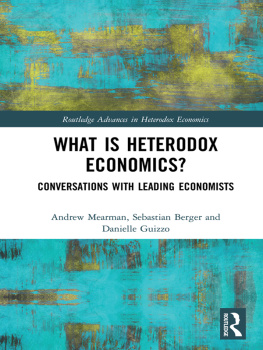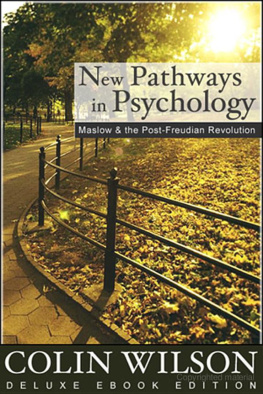Cover photo: iStock by Getty Images.
Published by State University of New York Press, Albany
2021 State University of New York
All rights reserved
Printed in the United States of America
No part of this book may be used or reproduced in any manner whatsoever without written permission. No part of this book may be stored in a retrieval system or transmitted in any form or by any means including electronic, electrostatic, magnetic tape, mechanical, photocopying, recording, or otherwise without the prior permission in writing of the publisher.
For information, contact State University of New York Press, Albany, NY
www.sunypress.edu
Library of Congress Cataloging-in-Publication Data
Names: Maslow, Sebastian, editor | Wirth, Christian, editor.
Title: Crisis narratives, institutional change, and the transformation of the Japanese state / edited by Sebastian Maslow and Christian Wirth.
Description: Albany : State University of New York Press, [2021] | Includes bibliographical references and index.
Identifiers: ISBN 9781438486093 (hardcover : alk. paper) | ISBN 9781438486109 (ebook)
Further information is available at the Library of Congress.
10 9 8 7 6 5 4 3 2 1
For Hannah and Junko
and
Jrme and Yukiyo
Preface and Acknowledgments
The initial idea for this edited volume emerged in early 2016. At the time, we both worked at Tohoku University and witnessed firsthand the ongoing official and civil society efforts to reconstruct the physical and social infrastructure that the triple disaster of earthquake, tsunami, and nuclear meltdowns of March 11, 2011, had destroyed.
Large photo exhibitions at highly frequented public spaces in Sendai and Tokyo told the story of hope and successful common efforts of reconstruction. These local narratives resonated with the narratives of revitalizing Japans rural areas, and clearly linked to long-standing debates about Japans social, economic and political situation and trajectory. Soon after the tsunami struck, 3.11 had become imbued with meaning far beyond the disaster and the directly affected Tohoku region. It had become a catch-all frame for narrating Japans most severe postwar crisis, including the possibilities and hopes for decisive change to end Japans lost decades. That is, the historical mission of reconstructing Japan as a wholebe it to make Japan normal again as conservative circles had long endeavored, or simply to return to economic growth and shared prosperity.
However, contemplating our personal experiences of witnessing the triple disaster in Sendai and Tokyo, respectively, we were intrigued by the contrast of decisive action taken in some areas, and the lagging responses we saw in others. Several years into the post-3.11 reconstruction effort, devastated areas had been cleared, partially rebuilt, and protected with new, massive concrete breakwaters. But while 3.11, not least due to deliberate official efforts, no longer served as frame for describing the state of the nation, the crisis continued in its localized form. News about radioactive leaks at Fukushima kept appearing; thousands still lived in temporary housing, and on the streets of Sendai volunteers kept collecting donations that would enable them to continue searching for missing people and assisting surviving disaster victims. Tohokus major newspaper kept on listing the numbers of missing and dead people from the disaster on its frontpage. A decade after 3.11, these memories of personal loss, and of personal and national recovery, seem in danger of being eclipsed. Japan is battling the severe COVID-19 pandemic and the national crisis, social, economic and political, is far from over. Thus, it is timely to put the current and recent crises into a broader historical context.
Under the banner of the lost decades, scholars and policymakers have long argued about the causes of and remedies for Japans malaise. There is much excellent scholarship both on the causes of Japans social and economic crises and on the politics of framing Japans 3.11. But these accounts require updating. And as they usually cover specific issue areas, we also feel that there is a need for connecting them to broader historical and political developments. Thus, it is quite clear that no single perspective, disciplinary or in terms of issue area, can capture the multifaceted social, economic, and political transformations at hand. The remedy, we are convinced, lies in adopting a more critical and thus more incisive methodological perspective to cover a range of issue areas that are normally not considered as co-constitutive parts of an integral whole. Looking back at three decades of national crises, how, then, has Japan been coping? Has this elevated sense of crisis resulted in fundamental change of the Japanese state?
In 2012, Abe Shinz led his Liberal Democratic Party back to power, as he pledged to take back Japan from the prolonged crisis allegedly caused by the nations postwar regime. In 2020, Abe became modern Japans longest-serving prime minister before suddenly resigning after almost eight years in office. During this tenure, he had consistently called for decisive reforms to end the compound national crises in form of military weakness in international affairs, economic stagnation, and rapid demographic decline and labor shortage. Abe restored political stability and enabled Japan to play a proactive role internationally. Yet the 2020 Tokyo Olympics and Paralympics, in line with the 1964 Tokyo Olympics envisioned to become a powerful symbol for the national rebirth, had to be postponed amidst the COVID-19 crisis. The impact of the pandemic also thwarted plans for the countrys economic recovery, and ever-growing public debt further deepened concerns over the sustainability of social welfare institutions and social disparities. Moreover, spiking numbers of infected and deceased people have, once again, triggered debates over the political leaderships ability to manage national crises. Thus, ten years after the March 2011 triple disaster, the sense of national crisis and decline has not vanished from public debate. To the contrary, it has become more salient than ever. So has the urgency for scholarly debate. In this vein, we hope that this volume will stimulate deeper-going discussions about the many lessons Japan offers in addressing and mediating the manifold crises the world is facing to today.
We are grateful to the following institutions and individuals for their support, allowing us to pursue our research interest and to bring this project to fruition. Tohoku Universitys Tohoku Forum for Creativity provided generous financial and logistical support for a first workshop in Sendai in February 2018. We especially thank Maeda Yoshiaki for his encouragement at the early stage of this project. Juthatip Wiwattanapantuwongs professional work was decisive for the smooth preparation, holding, and administrative wrapping-up of the Sendai workshop. Misumi Taekos continuous and generous support has been indispensable not only in arranging the workshop, but also for facilitating our earlier stays at Tohoku University. Moreover, we appreciate Bryce Wakefields and David Lehenys valuable inputs and comments at this occasion. Providing further financial and logistical backing, Patrick Kllner from the German Institute for Global and Area Studies made the holding of the second workshop in Hamburg in October 2018 possible. We thank Kai Schulze for his incisive observations as a discussant of several draft chapters at that occasion.


